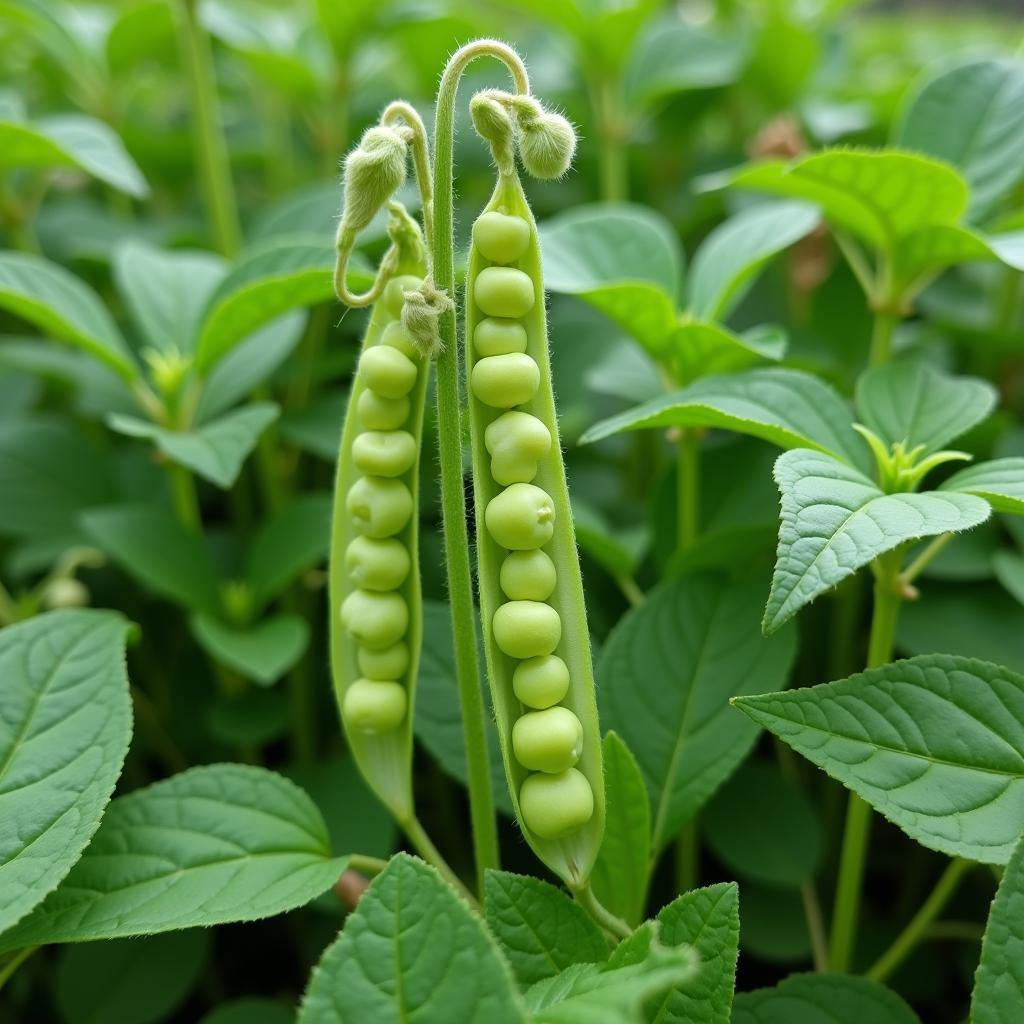Austrian Winter Peas Food Plots are a fantastic choice for hunters looking to provide high-quality forage for deer and other wildlife during the late season. This article will explore everything you need to know about planting and maintaining a thriving Austrian winter pea food plot, ensuring a plentiful food source that attracts game well into the winter months.
Why Choose Austrian Winter Peas for Your Food Plot?
Austrian winter peas offer several advantages as a food plot option. They are a cool-season annual legume, meaning they thrive in colder temperatures and provide valuable nitrogen to the soil. This makes them a perfect choice for late-season planting, when other food sources may be dwindling. They’re also highly palatable to deer, offering a valuable source of protein and energy during the challenging winter months. What’s more, Austrian winter peas are relatively easy to establish and maintain, even for novice food plotters.
Planting Your Austrian Winter Peas: A Step-by-Step Guide
Planting Austrian winter peas is a straightforward process, but following these steps will help ensure optimal growth and success:
-
Soil Preparation: Begin by testing your soil pH. Austrian winter peas prefer a slightly acidic to neutral pH (6.0-7.0). Amend the soil if necessary. Next, till or disc the area to create a seedbed free of weeds and debris.
-
Seeding: Plant Austrian winter peas at a rate of approximately 50-60 pounds per acre. Broadcasting is a common method, but drilling can provide better seed-to-soil contact and more uniform growth.
-
Depth: Plant the seeds about 1-2 inches deep. Planting too shallow can lead to poor germination, while planting too deep can exhaust the seed’s energy reserves before it reaches the surface.
-
Timing: The ideal planting time for Austrian winter peas is late summer or early fall, depending on your region. Aim for a time when the soil temperature is consistently below 70 degrees Fahrenheit.
-
Fertilization: While Austrian winter peas fix nitrogen in the soil, a starter fertilizer with phosphorus and potassium can promote early growth. Follow soil test recommendations for specific nutrient needs.
Maintaining Your Austrian Winter Pea Food Plot
Once your Austrian winter peas are established, minimal maintenance is required. However, a few key practices can help ensure a healthy and productive plot:
-
Weed Control: Monitor the plot for weed pressure. Early weed control is essential to prevent competition for resources. Hand-pulling or spot-spraying with a herbicide are effective options.
-
Moisture: While Austrian winter peas are relatively drought-tolerant, adequate moisture is crucial for germination and early growth. Supplemental watering may be necessary during dry periods.
-
Pest Management: Scout for insect pests and diseases. Contact your local agricultural extension office for recommendations on appropriate control measures.
Maximizing the Benefits of Your Austrian Winter Pea Food Plot
Austrian winter peas offer excellent forage for deer, but combining them with other plants can further enhance the attractiveness and nutritional value of your food plot. [food plot winter peas] Consider mixing Austrian winter peas with oats, rye, or other small grains to create a more diverse and appealing food source. You could also look at [best late season food plot] options for more ideas. Another good tip is to have a look at resources for the [best deer food plot for shade] if your plot doesn’t get a lot of sun. For those interested in other pea varieties, exploring the possibilities of [austrian peas food plots] or [peas for deer food plots] could be beneficial.
“Austrian winter peas are a reliable and nutritious forage option for deer, especially during the late season when other food sources are scarce,” says wildlife biologist, Dr. Sarah Miller. “They’re also relatively easy to grow, making them a great choice for both novice and experienced food plotters.”
 Healthy Austrian Winter Peas Plot
Healthy Austrian Winter Peas Plot
Conclusion
Austrian winter peas food plots provide a valuable food source for deer during the late season. By following the planting and maintenance guidelines outlined in this article, you can create a thriving plot that attracts and sustains deer throughout the winter months, contributing to a successful hunting season. Remember, a well-maintained Austrian winter pea food plot is an investment in the health of your local deer herd and enhances the overall hunting experience.
FAQs
-
What are the best soil conditions for Austrian winter peas? Slightly acidic to neutral pH (6.0-7.0), well-drained soil.
-
When should I plant Austrian winter peas? Late summer or early fall.
-
How deep should I plant Austrian winter pea seeds? 1-2 inches deep.
-
How much seed should I use? 50-60 pounds per acre.
-
Do Austrian winter peas need fertilizer? A starter fertilizer with phosphorus and potassium can be beneficial.
-
What are the benefits of planting Austrian winter peas? High-quality forage, attracts deer, improves soil health.
-
What other plants can I mix with Austrian winter peas? Oats, rye, or other small grains.
For further assistance, please contact us at Phone Number: 02437655121, Email: minacones@gmail.com, or visit us at 3PGH+8R9, ĐT70A, thôn Trung, Bắc Từ Liêm, Hà Nội, Việt Nam. Our customer service team is available 24/7.